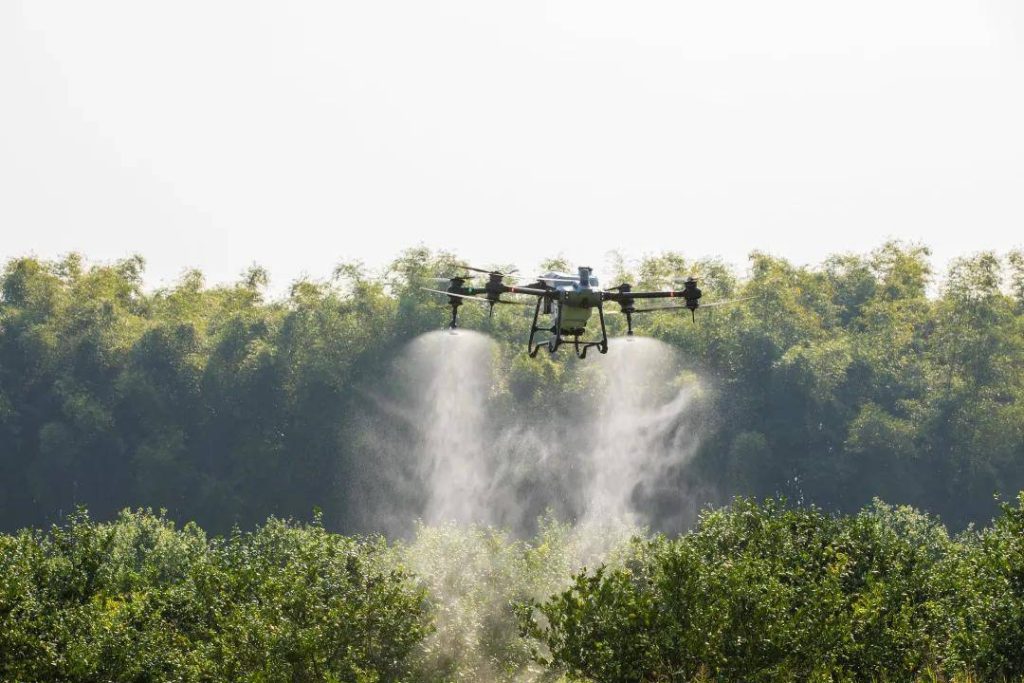“The Chinese cabbage in this greenhouse has just sprouted, and it will be listed and delivered to the public table in more than 20 days.” In Changjiang Village, Jinkou Street, Jiangxia District, Wuhan City, Hubei Province, Peng Chuanhong, the head of Wuhan Zijin Vegetable Professional Cooperative, introduced to the reporter while using his mobile phone to control and open the greenhouse watering system. Seconds later, a fine mist of water sprayed on the buds.
From manual labor in the past to intelligent control today, a vegetable has undergone new changes in the Yangtze River village.
Changjiang Village is located on the bank of the Yangtze River, only 500 meters from the Chiji Ferry. This place is located in a fortress with fertile soil. The villagers used to rely on fishing, growing cotton, and rice for a long time to make a living.
Because fishing and farming do not earn much money, many people chose to go out to work or enter factories at the end of the last century, leaving a large area of land barren and unmanned for cultivation. “Chen Dingfa, the village secretary of Changjiang Village, said that in 2003, the village collectively transferred 400 acres of land, mainly for planting open-air vegetables. However, due to limited technical equipment, unstable production, weak market competitiveness, and annual losses.
The turnaround occurred in 2013. We have built a 50 acre vegetable greenhouse. Previously, we could only grow two seasons in the open air, but in the greenhouse, we could grow six or seven crops of vegetables a year, which has increased the yield and can be sold out of season. “Chen Dingfa couldn’t help but be excited when he mentioned his exploration back then.” With an investment of 7000 yuan per acre, he earned 20000 yuan that year, which played a great demonstration and driving role. Villagers have joined in one after another. Now, the core planting area of vegetables in the village greenhouse is 2400 acres.
Due to its advantageous geographical location and convenient transportation, the cultivation of fast lettuce has gradually become large-scale, and Changjiang Village has quickly become one of the important “vegetable baskets” in Wuhan City. But if we want to further develop, we find it difficult, “Chen Dingfa explained. The village has always used traditional and simple vegetable greenhouse planting methods, and lacks professional sorting centers, logistics trading centers, and other industrial supporting facilities.
Rural revitalization requires gathering resources from all parties. In order to comprehensively promote rural revitalization and achieve results, in recent years, Wuhan has carried out the action of “state-owned enterprises linking villages”. Wuhan Urban Development Group partnered with six villages in Jinkou Street, Jiangxia District, including Changjiang Village, to invest in the construction of Hubei Jinkou Agricultural Trade and Vegetable Logistics Trading Center.
Starting from a single vegetable, the “State owned Enterprise Alliance Village” has also allocated a special fund of 300000 yuan for the construction of Meili Village Bay, the repair of safety barriers, and other projects to improve basic supporting facilities and promote industrial upgrading. A new rural landscape with vegetable tourism as the theme is being drawn. From 2013 to 2022, the per capita annual income of villagers in Changjiang Village increased from 6800 yuan to 32000 yuan.
In future plans, tourists can pick, watch lotus, catch shrimp, and dig lotus roots in Changjiang Village. Featured homestays are available for accommodation, and greenways along the Yangtze River are available for play. The year-round agricultural experience activities will become a new economic growth point for Changjiang Village.







Please sign in to comment
register